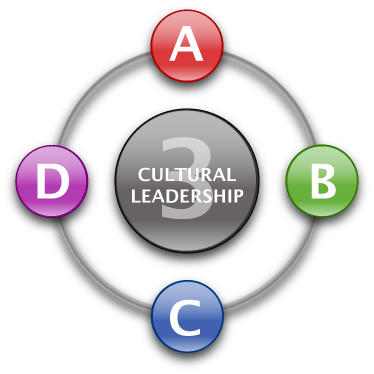Standard 3. Cultural Leadership
This section of the module explores the elements of Standard 3. Click any element to explore it
in depth.
Principals and assistant principals must understand the important role a school’s
culture plays in contributing to the exemplary performance of the school. Principals and assistant
principals should support and value the traditions and norms of the school and community that result in
a sense of identity. A principal or assistant principal must be able to “re-culture” the school
if needed to align with the school’s vision and mission. Cultural leadership implies an understanding of
the school and the people in the school. Knowing how to connect with the traditions of the school community
in order to move them forward, is an attribute that the school executive will need to develop in order to
support the school’s efforts to achieve individual and collective goals.
Elements
- Focus on Collaborative Work Environment: The principal/assistant principal
understands and acts on the understanding of the positive role that a collaborative work environment
can play in the school's culture.
- School Culture and Identity: The principal/assistant principal develops and uses
shared vision, values and goals to define the identity and culture of the school.
- Acknowledges Failures; Celebrates Accomplishments and Rewards:
The principal/assistant principal acknowledges failures and celebrates accomplishments of
the school in order to define the identity, culture and performance of the school.
- Efficacy and Empowerment: The principal/assistant principal develops a sense
of efficacy and empowerment among staff which influences the school's identity, culture and performance.

